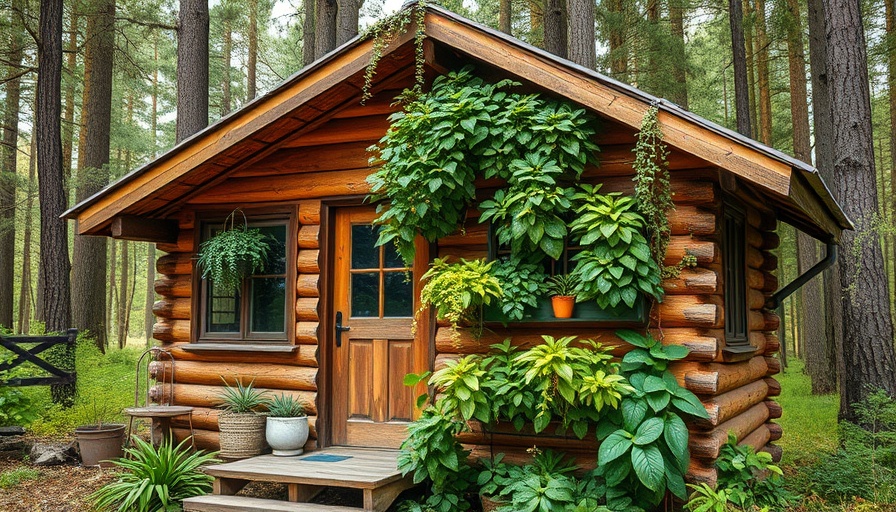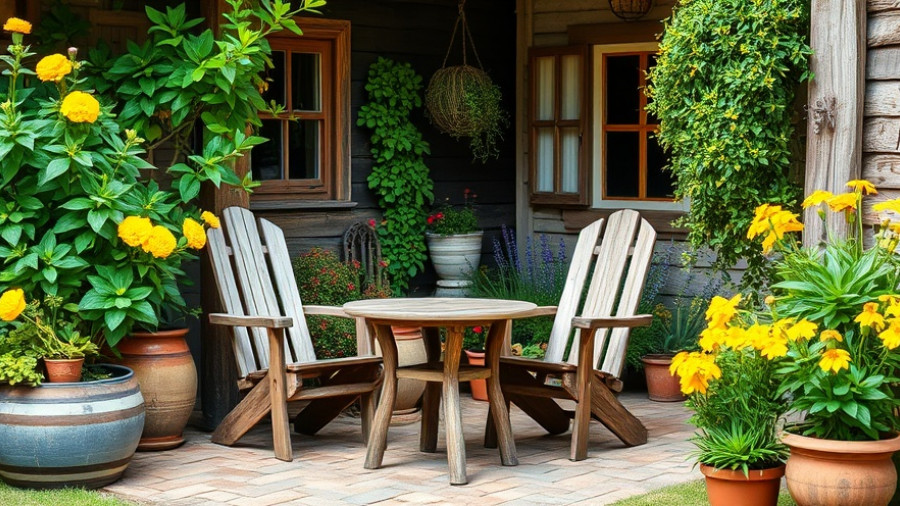
Unleashing Creativity in Your Outdoor Space
Transforming your outdoor garden into a vibrant sanctuary can be one of the most rewarding DIY endeavors. With the rising interest in sustainability, particularly among environmentally conscious homeowners, using reclaimed materials adds an eco-friendly twist to traditional gardening. In this exploration of vertical outdoor gardens using salvaged materials, we refine not just our green thumbs but also our commitment to eco-conscious living.
In 'Vertical Outdoor Garden Ideas Using Reclaimed Materials,' we delve into the beauty and practicality of vertical gardens crafted from salvaged items, sparking a deeper analysis on how these methods can revive our outdoor spaces.
Why Choose Vertical Gardens?
Vertical gardens are more than just a trend—they’re a way to maximize space and add a stunning visual element to any outdoor area. By elevating plants, you not only save ground space but also create a unique aesthetic. With optimal sun exposure and excellent air circulation, vertical gardens can significantly improve plant health. Additionally, they are ideal for homeowners with limited outdoor space, allowing for lush greenery even in small backyards or balconies.
Eco-Friendly Materials for Your Garden
One of the joys of creating vertical gardens is the ability to incorporate reclaimed materials. Here are a few ideas that spread joy, promote sustainability, and offer a third life to once-forgotten items:
- Old Pallets: A favorite in DIY projects, wooden pallets make for sturdy bases to create vertical structures for climbing plants.
- Metal Containers: Old tin cans or buckets can be repurposed as hanging planters, providing a burst of color and texture.
- Gutters: Rain gutters are perfect for shallow-rooted plants like herbs or strawberries—simply mount them vertically on the wall.
Incorporating Technology in Green Spaces
In today’s tech-driven world, integrating smart gardening solutions can enhance your vertical garden experience. Tools like humidity and soil sensors can help monitor plant health, ensuring they receive just the right amount of water and nutrients. Additionally, smart irrigation systems can optimize water usage, drastically reducing waste while keeping your garden flourishing.
A Step-by-Step Guide to Building Your Vertical Garden
Building a vertical garden may seem daunting, but here’s a straightforward approach:
- Select Your Location: Choose a space that receives adequate sunlight and offers easy access for care.
- Gather Materials: Look around your home, or visit local salvage yards for reclaimed items.
- Build Your Structure: Frame your vertical garden using your chosen materials, ensuring it’s secure and stable.
- Prepare to Plant: Fill your containers or structures with the right soil mix for your selected plants.
- Plant! Choose plants that are suited for vertical gardening—think trailing vines, strawberries, and herbs.
Common Misconceptions About Vertical Gardening
Many individuals feel that vertical gardening is only for those with extensive gardening knowledge or skills. However, the reality is that vertical gardens can be created by anyone with a bit of creativity and resourcefulness. Start small; even a small vertical herb garden can make a world of difference in your culinary adventures!
Conclusion: Embrace Creativity and Sustainability
Creating a vertical garden using reclaimed materials is an excellent way to enhance your outdoor space while staying true to eco-friendly principles. By blending creativity, resourcefulness, and technology, you not only beautify your surroundings but also contribute to a more sustainable future. So gather your materials, design your vertical paradise, and enjoy the fruits of your labor!
If you're inspired to embark on your vertical gardening journey, share your ideas and experiences with friends and family. Every conversation about sustainable practices strengthens our collective resolve for a greener planet!
 Add Row
Add Row  Add
Add 



Write A Comment